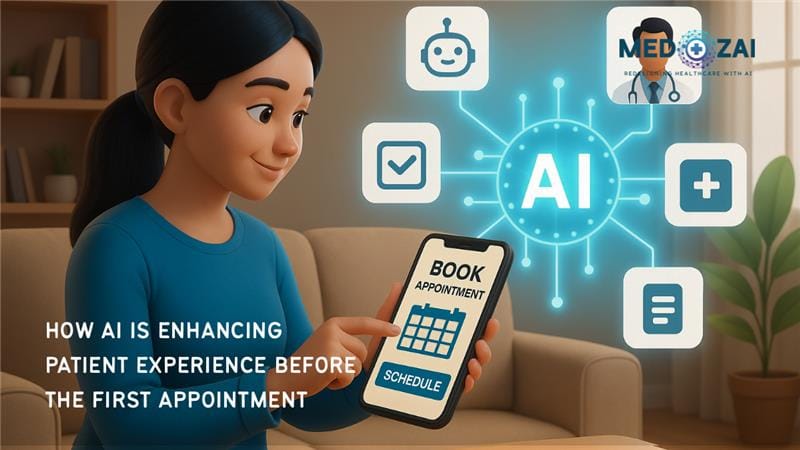Harnessing Clinic AI for Smarter, Patient Centric Care
Healthcare is at a turning point. Missed appointments, inefficient intake, and rising administrative burdens are forcing clinics to rethink how care begins. The following fast facts show why AI in patient onboarding is becoming essential across the U.S. and Canada.
Fast Facts
53% Drop in No-Shows: Clinics using AI-powered self-scheduling portals saw a 53% relative reduction in missed appointments (NCBI).
1 Million Records Trained: AI triage models built on nearly one million consultations now deliver customized questioning and care recommendations (JAMIA).
50% Less Charting Time: Ambient AI documentation tools reduce charting by nearly half, saving physicians 7 minutes per encounter (NCBI, MedCentral).
Introduction
The patient journey truly begins before the first appointment, starting with scheduling, intake, and provider preparation. In both the U.S. and Canada, this early phase shapes patient satisfaction, trust, and treatment effectiveness.
AI-powered systems are transforming pre-visit workflows across healthcare systems, enabling smarter scheduling, better engagement, efficient documentation, proactive triage, and adherence to compliance, all while reducing administrative burdens.
Across this guide, we’ll explore high value use cases and impactful statistics grounded in reputable sources, enriched with U.S. and Canadian context, to illustrate how AI enhances patient onboarding before the first appointment.
AI Powered Scheduling & Dynamic Reminders
2. Predictive Analytics Reducing No Shows
Intelligent Intake & AI Powered Triage
2. AI Augments Clinical Efficiency
Personalized Pre-Visit Engagement
Automating Documentation & EMR Preparation
Patient Flow, Compliance & System Efficiency
1. Smarter Patient Flow
2. Regulatory Confidence
Canadian Healthcare System & ROI Impact
A McKinsey report projects that AI adoption across Canadian healthcare could generate 4.5%–8% in net annual savings, equivalent to CA$14–26 billion, primarily by reducing administrative overhead and improving care delivery efficiency .
2. U.S. Financial Toll of No-Shows
Conclusion
Frequently Asked Questions (FAQs)
1. How much can AI reduce no-show rates?
Canadian clinics cut no-shows from ~21% to ~7% using OAB with reminders. Some systems achieved up to 69% reductions in high-risk populations.
2. Does AI really improve intake accuracy?
Yes—AI triage trained on nearly one million records personalizes intake and optimizes patient routing.
3. Can AI help providers save time?
AI scribing tools prepare documentation pre-visit, allowing clinicians to focus more on patient care. (PMC)
4. What’s the AI-generated value for Canadian healthcare?
Estimated savings: 4.5–8% in net annual spending (CA$14–26 billion). McKinsey & Company)
5. Is patient flow improved with AI?
Yes. AI models predict discharge readiness and optimize scheduling for better flow and capacity planning. (NCBI)

